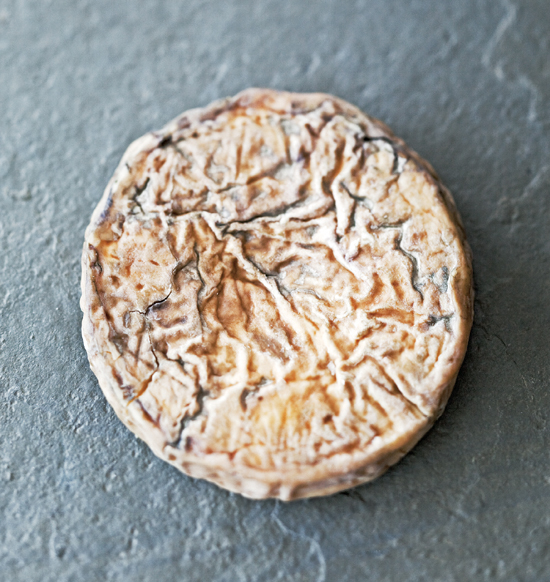
I am thrilled to invite you on a rewarding journey, one that starts with a simple ingredient, milk, which is transformed through a few fundamental practices into glorious cheese. Whether you are a curious novice or an experienced hobbyist, you are part of a culture with a seemingly insatiable appetite for hand-crafted cheese, always yearning to discover yet another treasure at the local cheese shop or as part of a restaurant’s cheese plate. Maybe you are like me: when I encounter a new, remarkable artisan cheese, it makes an indelible mark, and I think to myself, “I want to make a cheese like that!” The enthusiasm comes easy when there are so many cheeses to be inspired by and so many excellent reasons to make your own. Perhaps you are motivated by the guaranteed freshness of homemade cheese or want to save money through DIY production, or maybe you are lured by the age-old tradition of homestead cheese making as a means to feed your family.
I’ve worked with some of the most influential cheese makers and authorities in the field, and now, in this comprehensive book, I share with you the collective expertise and knowledge of the American cheese making community—a dedicated segment of the burgeoning artisan food movement. As a passionate cook, educator, and hobbyist cheese maker, I adore both making hand-crafted cheeses and cooking with the results, and I’m very keen to pass on what I know. This book is my offering, filled with formulas for making more than eighty cheeses, including longtime favorites, and more than two dozen newer contemporary cheeses.
We are lucky that the appreciation for hand-crafted cheeses, in the recent past a rather rarefied interest, is now part of mainstream culture. There is growing and widespread interest in hand-crafted foods and the do-it-yourself experience—all part of what Peter Reinhart calls the artisan renewal. But it is also worth noting that a mere century ago cheese was still a relatively regional—and European—phenomenon and that cheese making techniques were limited by climate, geography, and technology in a way that modernity has rendered obsolete. For example, bloomy-rind cheeses like Camembert and Brie were first created in northwestern France because cows were prevalent, cheese was made for home or village consumption, and a specific acid-tolerant mold flourished in that region. High in the mountains, fewer cows were grazed and their milk was pooled cooperatively. Therefore, large wheels of low-moisture cheeses like Comté and Emmental were created to be shared and to last through the winter months. In the United States, cheese production first emulated regional European cheeses, made by and for specific immigrant audiences. Hard Italian-style cheeses were crafted in California, Germanic washed-rind cheeses like Limburger were produced in Wisconsin, and cheddar was produced in New York.
Yet today, cheese makers have nearly unfettered access to the specialized equipment and molds and cultures needed to produce any type of cheese; the boundaries that once kept cheeses regionalized no longer exist. This has resulted in what cheese authority Liz Thorpe notes is a significant blurring of and riffing on tradition where Old World meets New. And though technology has increased our access to supplies, one of the most enjoyable parts of cheese making is decidedly unmodern: you still can’t rush cheese. It slows down the pace of daily life by requiring our attention and patience; waiting is essential to its success.
Knowing this, I should not be surprised that my joyful journey to writing this book has taken fifteen years in the cheese world, organizing culinary tours to various farms and creameries, teaching cooking classes using artisan cheeses, and sharing the hand-crafted babies of passionate artisan producers in Northern California. These award-winning craftspeople inspire me, and their dedication has shaped my career and provided motivation for writing this book.
But maybe the most generous educator is cheese itself. Each time I make cheese, the process teaches me something valuable. I can also say to you, with certainty, expect the unexpected. Cheese making is an unending learning process, even for those who do it daily. My job in this book is to demystify and simplify that process enough that you can confidently venture forth into this exciting, mystical world. Once your hands are on the wheel, the road to proficiency is simple: keep making more cheese and joyfully share it!
In addition to the more than eighty tested cheese making formulas, I have included two dozen savory and sweet recipes inspired by the ethnic or cultural origins of the featured cheeses—the Mediterranean, Northern Africa, India, and Latin and North America. Helpful at-a-glance charts, worksheets, guides for aging, and steps for making your own versions of new artisan cheeses can be found on this book’s companion website, www.artisancheesemakingathome.com.
I encourage you to visit my blog, Artisan Cheese Making at Home (http://homecraftedcheese.com), so that together we may share updates, discussions, recipes, new developments, and discoveries. Now, let’s get started on this magical journey!
A note on the photography: All of the cheeses photographed for this book by the gifted Ed Anderson were made either by me or by my team of skilled hobbyist cheese heads. Additional photos were taken by me on field trips to cheese makers and in my home cheese making kitchen. Most of the cheeses are perfectly beautiful; some are less so. I hope showing them to you warts and all proves a valuable tool for gaining knowledge of what transpires (even unexpectedly) in the cheese making process. Trust me, even the ugly ducklings can be delicious! The breads in the photographs are courtesy of Della Fattoria, Petaluma, California.
Young Buttermilk Blue at 4 weeks